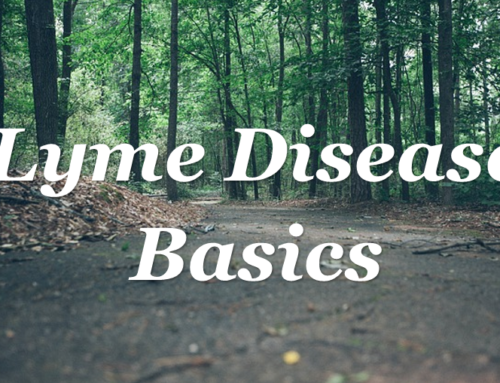Cardiovascular disease is one of the most significant but preventable offenses against modern health. Enhanced Medical Care focuses on optimizing health and wellness by making suggestions to protect patients against heart disease on many fronts. Exercise, nutrition and other lifestyle interventions greatly affect how our hearts function. Our Personalized Nutritional Evaluation looks at the balance of micronutrients within your body that play a role in keeping your heart healthy. An exercise program also significantly helps to improve cardiovascular health by strengthening the heart muscle.
The less efficient your heart is, the more it has to beat per minute to get your blood where it needs to go. Regular cardiovascular exercise strengthens the heart muscle. A stronger heart muscle allows your heart to increase the volume of blood it pumps out with every beat. A great way to measure this cardiovascular improvement is by calculating your Recovery Heart Rate, a measure of your cardiac efficiency.
Your Recovery Heart Rate, the speed at which your heart rate returns to normal after exercise, can indicate physical cardiac condition and the risk of certain diseases. For instance, according to the New England Journal of Medicine, people whose heart rate recovery time is long are at a higher risk of death than people with shorter recovery times regardless of physical condition or other risk factors. According to the National Emergency Medicine Association, measuring heart rate recovery rates is one way to tell whether an exercise program is effective. People in better cardiovascular condition tend to have lower heart rates during peak exercise, and return to their resting heart rate more quickly after physical activity. Before embarking on a new exercise regimen, record your resting heart rate as a baseline and see how it improves over time with your new fitness efforts.
Check your fitness level by measuring your heart rate recovery time!
Use this calculator only if you are physically active on a regular basis. If you’re just starting an exercise program, contact Dr. Costa to determine a safe target heart rate.
To calculate your heart rate recovery time, you’ll need:
- A watch or clock with a second hand
- Pencil and paper
- A place to exercise
Step 1: Find Your Target Heart Rate
Use the chart below to find the target heart rate for your age group.
Age Target Heart Rate* Zone During Exercise (Heartbeats per Minute)
- 20-29 years old: 120-160 beats/ minute
- 30-39 years old: 114-152 beats/ minute
- 40-49 years old: 108-144 beats/ minute
- 50-59 years old: 102-136 beats/ minute
- 60-69 years old: 96-128 beats/ minute
- 70-79 years old: 90-120 beats/ minute
- 80-89 years old: 84-112 beats/ minute
- 90-99 years old: 78-104 beats/ minute
- 100 years old or older: 72-96 beats/ minute
*Target heart rates are based on 60%-80% of estimated maximum heart rates (220 minus age).
Now, practice finding your pulse point and calculating your heart rate:
Place one or two fingertips (not a thumb) on the opposite wrist, just below the base of your thumb. Count the number of heartbeats you feel in 10 seconds. Multiply that number by six to get your heart rate per minute.
Step 2: Complete Your Fitness Activity
The goal in this step is to increase your heart rate, so choose an activity that’s going to get your heart pumping. Go for a brisk walk or run around the block, jump rope, use an elliptical trainer, or do any activity that will increase your heart rate. While you’re exercising, check your heart rate frequently. You’re aiming to hit your target heart rate from the chart above. Once your heartbeat is within the target range, stop exercising and write down two measurements:
1. Your heart rate immediately after stopping
2. Your heart rate 2 minutes later
Step 3: Calculate Your Heart Rate Recovery
Subtract your 2-minute heart rate from the heart rate you took immediately after exercising. The faster your heart rate recovers (or slows down ) the fitter and healthier your heart.
If the difference between the two numbers is:
- Less than 22: Your biological age is slightly older than your calendar age.
- 22-52: Your biological age is about the same as your calendar age.
- 53-58: Your biological age is slightly younger than your calendar age.
- 59-65: Your biological age is moderately younger than your calendar age.
- 66 or more: Your biological age is a lot younger than your calendar age.
If you have any questions about how to calculate your resting heart rate or you would like to learn more about the Enhanced Medical Care Wellness Program, please contact us! We look forward to hearing from you.
Boston, Brookline, Wellesley, Newton, Concord, Sudbury, Dover, Hingham, Weston, Cohasset, Needham, Chestnut Hill, Marshfield, Sherborn, Lexington, Cambridge
To your health!







It’s actually a nice and useful piece of info. I am satisfied that you just shared this helpful information with us.
Please stay us up to date like this. Thanks for sharing.
Glad I’ve finally found sonmthieg I agree with!
Very shortyly this site will be famous among all blogging people, due to it’s good content
Hello Web Admin, I noticed that your On-Page SEO is is missing a few factors, for one you do not use all three H tags in your post, also I notice that you are not using bold or italics properly in your SEO optimization. On-Page SEO means more now than ever since the new Google update: Panda. No longer are backlinks and simply pinging or sending out a RSS feed the key to getting Google PageRank or Alexa Rankings, You now NEED On-Page SEO. So what is good On-Page SEO?First your keyword must appear in the title.Then it must appear in the URL.You have to optimize your keyword and make sure that it has a nice keyword density of 3-5% in your article with relevant LSI (Latent Semantic Indexing). Then you should spread all H1,H2,H3 tags in your article.Your Keyword should appear in your first paragraph and in the last sentence of the page. You should have relevant usage of Bold and italics of your keyword.There should be one internal link to a page on your blog and you should have one image with an alt tag that has your keyword….wait there’s even more Now what if i told you there was a simple WordPress plugin that does all the On-Page SEO, and automatically for you? That’s right AUTOMATICALLY, just watch this 4minute video for more information at. Seo Plugin
This artlice went ahead and made my day.
I wanted to jot down a note to be able to appreciate you for all the magnificent points you are posting on this website. My time intensive internet investigation has at the end been paid with brilliant information to talk about with my family members. I ‘d mention that most of us readers actually are undoubtedly lucky to be in a useful site with many awesome professionals with interesting pointers. I feel extremely grateful to have discovered the web page and look forward to tons of more excellent times reading here. Thank you once again for a lot of things.
If some one desires being updated with hottest
technologies therefore he should be pay a quick visit this web site and be
updated daily.
Excellent article. I certainly appreciate this amazing site.
Stick with it!
Buenos dias! Thanks for this post! I find it hard to search for awesome details out there when it comes to this subject material. appreciate for the guide!
WONDERFUL Post.thanks for share..extra wait .. ?
I? need to examine with you here. Which isn’t something I normally do! I get pleasure from reading a publish that can make people think. Additionally, thanks for allowing me to comment!
It? arduous to seek out educated people on this topic, but you sound like you recognize what you?e talking about! Thanks
An attention-grabbing discussion is worth comment. I feel that you need to write more on this topic, it may not be a taboo topic however usually persons are not sufficient to speak on such topics. To the next. Cheers
I think this really is one of the most significant information for
me personally. And i am just glad reading your article.
But should remark on few general things, The internet site style is wonderful,
the articles is absolutely excellent : D. Good job, cheers
Hi there! I recently want to provide you with a big thumbs up for your great information you’ve got here with this
post. I am going back to your internet site for additional soon.
Thanks so much! We really agonize over or content.
Maybe you have considered publishing an e-book or guest authoring
on other sites? I have got your blog based about the same subjects you discuss and would
love to obtain you share some stories/information. I am aware my
subscribers would value your projects. If you’re even remotely interested, feel free to shoot me an e-mail.
Hey there! Do you use Twitter? I’d like to follow you if that would be ok.
I’m undoubtedly enjoying your blog and look forward to new updates.
Yes. MyTwitter accou t is @enhancedmedicalcare
Thanks Sabrina. @enhancedmedical
Admiring the persistence you put into your website and detailed information you offer.
It’s awesome to come across a blog every once in a
while that isn’t the same outdated rehashed material.
Fantastic read! I’ve saved your site and I’m including your RSS feeds to my Google account.
I’ve learn several excellent stuff here. Certainly worth bookmarking for
revisiting. I wonder how so much attempt you place to create this type of
magnificent informative website.
Do you mind generally if i quote a couple of your respective
articles provided that I provide credit and sources straight back
to your webpage? My website is with the very same niche
as yours and my visitors would truly take advantage of a lot of the information you
provide here. Please let me know if this alright along with you.
Thanks!
What is the website you wish to post my article on?
Woah! I’m really digging the template/theme of this website. It’s simple, yet effective. A lot of times it’s challenging toget that “perfect balance” between superb usability and appearance. I must say you’ve done a fantastic job with this.Additionally, the blog loads extremely fast for me on Chrome.Superb Blog!
Thanks so much! We jabber worked hard at it.
“Muchos Gracias for your blog article. Want more.”
Muchos Gracias for your article post.Thanks Again. Awesome.
Really appreciate you sharing this blog.Thanks Again.
Hi there! I simply would like to give an enormous thumbs up for the nice info you may have .
Excellent blog here! Also your web site loads up very fast! What web host are you using? Can I get your affiliate link to your host? I wish my website loaded up as quickly as yours lol caffkbdeccec
GoDaddy!
There are some attentiongrabbing points in time in this article but I dont know if I see all of them heart to heart. There may be some validity however I will take maintain opinion until I look into it further. Good article , thanks and we would like extra! Added to FeedBurner as properly ggcfkgafdeed
Muchos Gracias for your blog post. aecafaddebda
I do believe all of the ideas you’ve offered for your post. They are really convincing and will definitely work. Still, the posts are very quick for newbies. May just you please extend them a little from next time? Thank you for the post. fbfffeddkdedgaee
I really like your writing style, wonderful info, thank you for putting up :D. “You can complain because roses have thorns, or you can rejoice because thorns have roses.” by Ziggy.
I’m not sure exactly why but this site is loading incredibly slow for me. Is anyone else having this problem or is it a problem on my end? I’ll check back later on and see if the problem still exists.
I have been tips it leads slowly on IE.I will be exploring that.
Hi there, You have done a great job. I will certainly digg it and personally suggest to my friends. I’m sure they’ll be benefited from this site.
Hi would you mind stating which blog platform you’re working
with? I’m going to start my own blog soon but I’m having a tough time choosing between BlogEngine/Wordpress/B2evolution and Drupal.
The reason I ask is because your layout seems different
then most blogs and I’m looking for something completely unique.
P.S Sorry for being off-topic but I had to ask!
Sorry for three delay in responding. WordPress!
I like what you guys are up too. Such smart work and reporting! Carry on the excellent works guys I have incorporated you guys to my blogroll. I think it will improve the value of my web site :).
Thanks so much!
“Great Blogpost! Thanks for sharing your info. I really appreciate your efforts and I will_ be waiting for your further write ups thank you once again.”
“I was able to find good information from your articles.”
Great work! This is the type of information that should be shared around the web. Shame on the search engines for not positioning this post higher! Come on over and visit my site . Thanks =)
Thanks for one’s marvelous posting! I actually enjoyed reading it, you happen to be a great author.I will remember to bookmark your blog and definitely will come back from now on. I want to encourage one to continue your great writing, have a nice weekend!
Thanks! We put A LOT of effort to achieve unique cutting edge content.
Hello! I’ve been following your web site for a long
time now and finally got the courage to go ahead and give you a shout out from Dallas
Tx! Just wanted to mention keep up the excellent work!
Msny many thanks!
I really like it, where i can find more?
Great post. Thank you for your time in helping me understand on the matter.
Really nice style and design and wonderful content material , very little else we need : D.
Enjoyed every bit of your post.Really thank you! Want more.
I see your page needs some fresh & unique content.
Writing manually is time consuming, but there is solution for
this hard task. Just search for – Miftolo’s tools rewriter
Yes. @enhancedmedical
Hi there! Do you use Twitter? I’d like to follow you if that
would be ok. I’m definitely enjoying your blog and look
forward to new posts.
I cannot thank you enough for the article. Cool.
Way to go on this esasy, helped a ton.
Hi, Neat post. There is a problem with your web site in internet explorer, would check this IE still is the market leader and a large portion of people will miss your magnificent writing because of this problem. ekcaeeegddekaggg
Hey, you used to write amazing, but the last couple of posts have been kinda boring I miss your tremendous writings. Past couple of posts are just a little out of track! come on! ddfkddffgdffgabg
I will try harder. I’ve had a different writer.
Wow, marvelous blog layout! How long have you been blogging for? you made blogging look easy. The overall look of your website is great, as well as the content! dfakbbfckdae
Enjoyed studying this, very good stuff, regards . A man may learn wisdom even from a foe. by Aristophanes. bekdcdbeefecddge
This is a great tip particularly to those fresh to the blogosphere.
Simple but very precise information? Many thanks for sharing this one.
A must read post!
Many thanks!